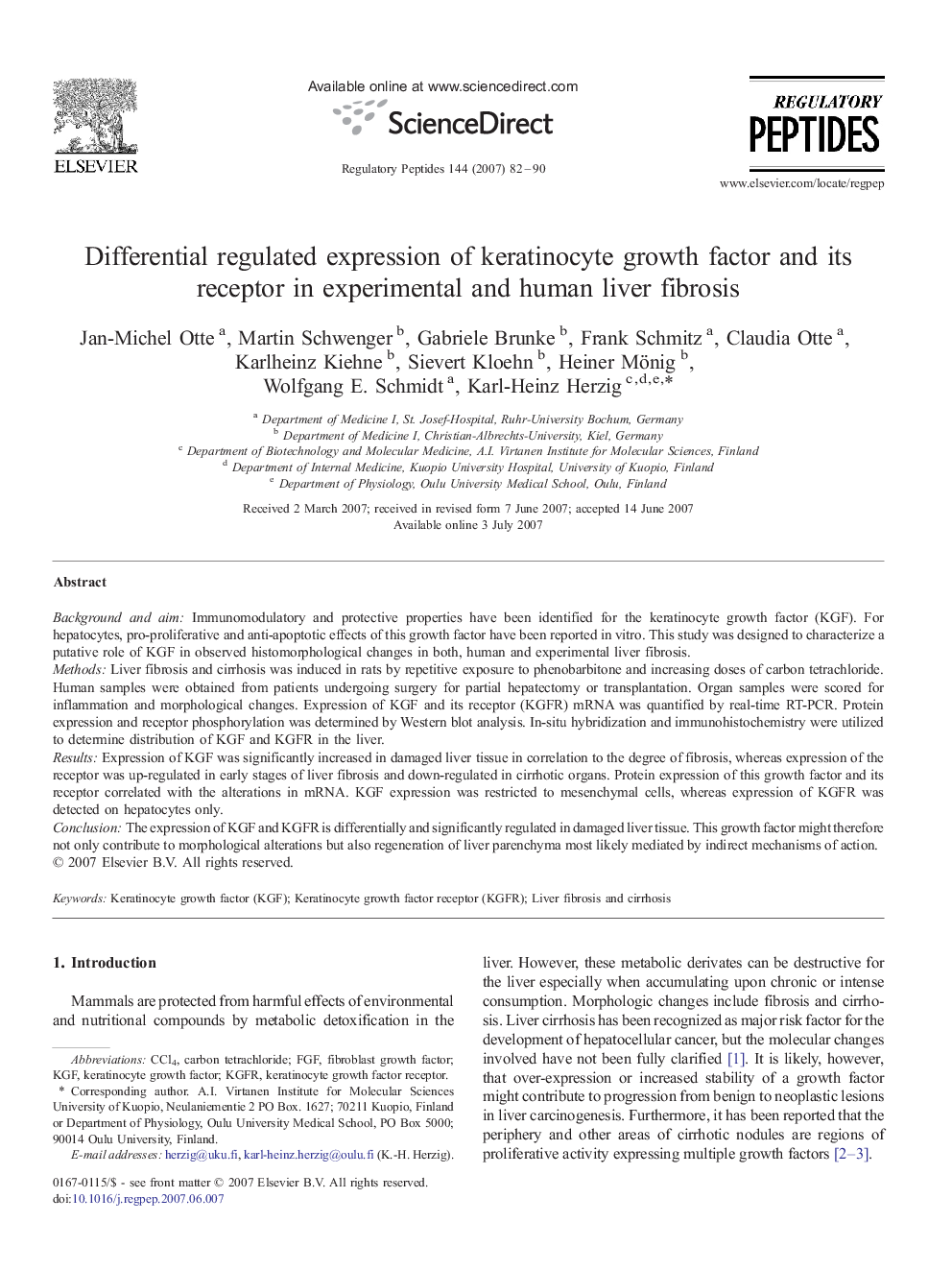| Article ID | Journal | Published Year | Pages | File Type |
|---|---|---|---|---|
| 2023352 | Regulatory Peptides | 2007 | 9 Pages |
Background and aimImmunomodulatory and protective properties have been identified for the keratinocyte growth factor (KGF). For hepatocytes, pro-proliferative and anti-apoptotic effects of this growth factor have been reported in vitro. This study was designed to characterize a putative role of KGF in observed histomorphological changes in both, human and experimental liver fibrosis.MethodsLiver fibrosis and cirrhosis was induced in rats by repetitive exposure to phenobarbitone and increasing doses of carbon tetrachloride. Human samples were obtained from patients undergoing surgery for partial hepatectomy or transplantation. Organ samples were scored for inflammation and morphological changes. Expression of KGF and its receptor (KGFR) mRNA was quantified by real-time RT-PCR. Protein expression and receptor phosphorylation was determined by Western blot analysis. In-situ hybridization and immunohistochemistry were utilized to determine distribution of KGF and KGFR in the liver.ResultsExpression of KGF was significantly increased in damaged liver tissue in correlation to the degree of fibrosis, whereas expression of the receptor was up-regulated in early stages of liver fibrosis and down-regulated in cirrhotic organs. Protein expression of this growth factor and its receptor correlated with the alterations in mRNA. KGF expression was restricted to mesenchymal cells, whereas expression of KGFR was detected on hepatocytes only.ConclusionThe expression of KGF and KGFR is differentially and significantly regulated in damaged liver tissue. This growth factor might therefore not only contribute to morphological alterations but also regeneration of liver parenchyma most likely mediated by indirect mechanisms of action.
